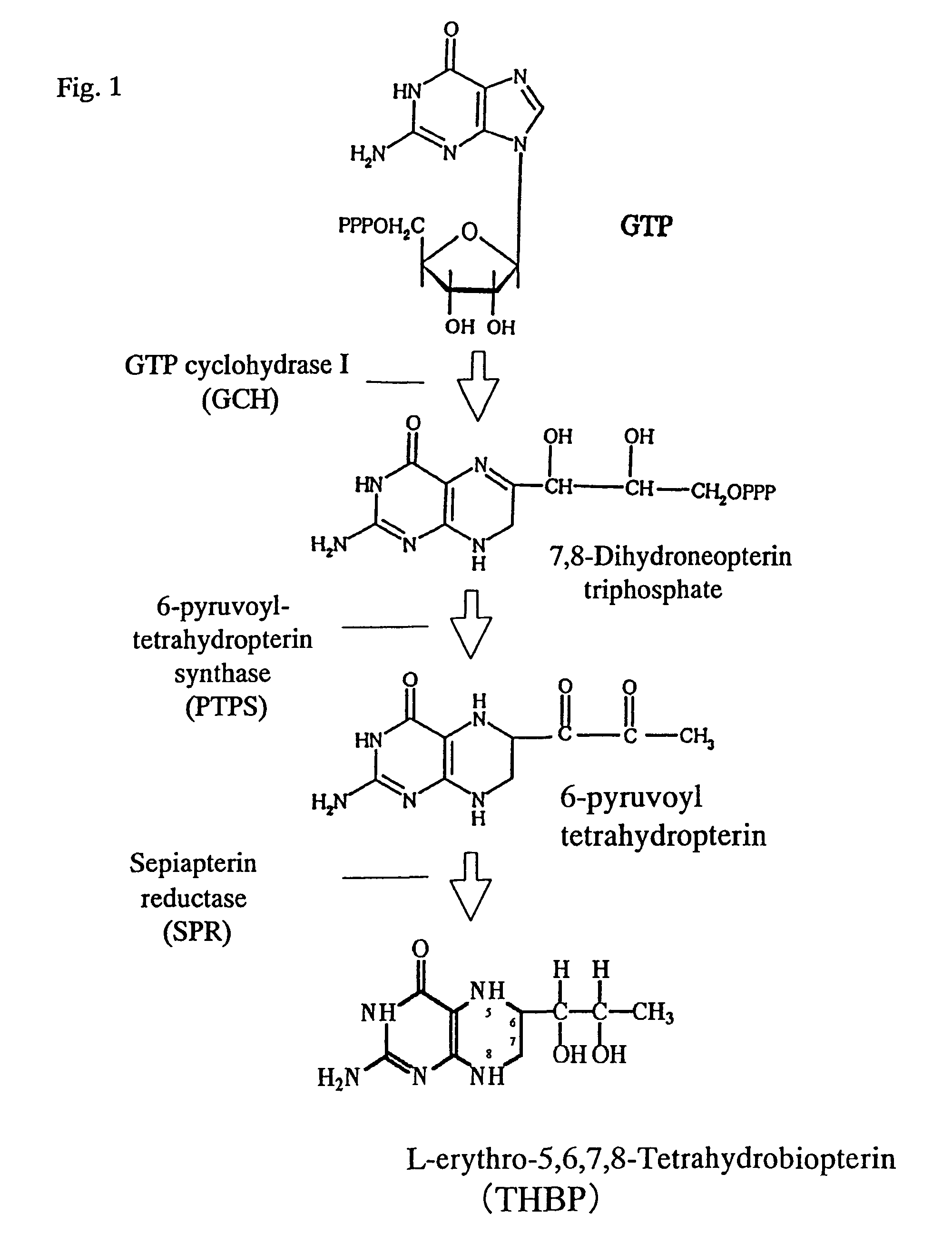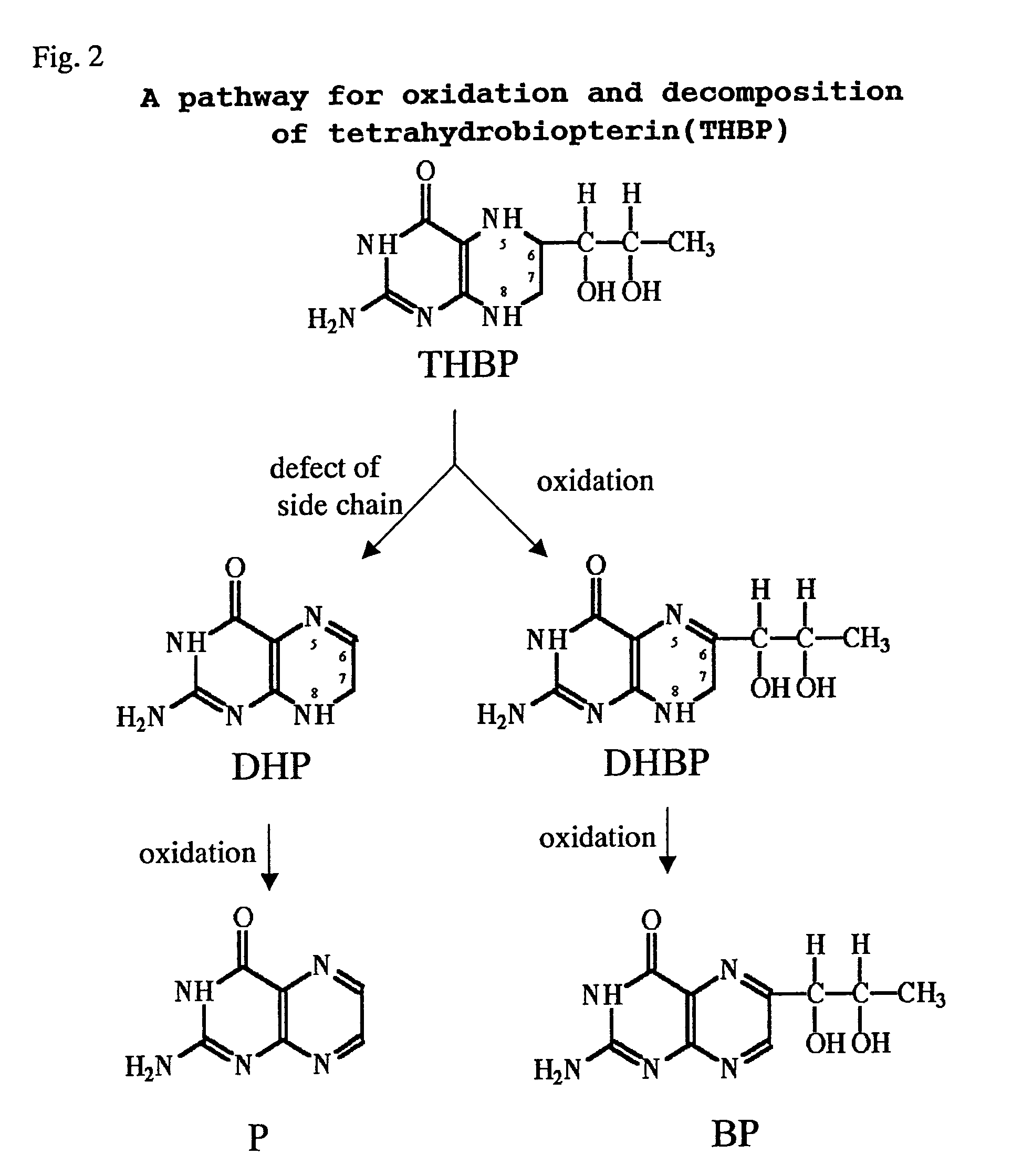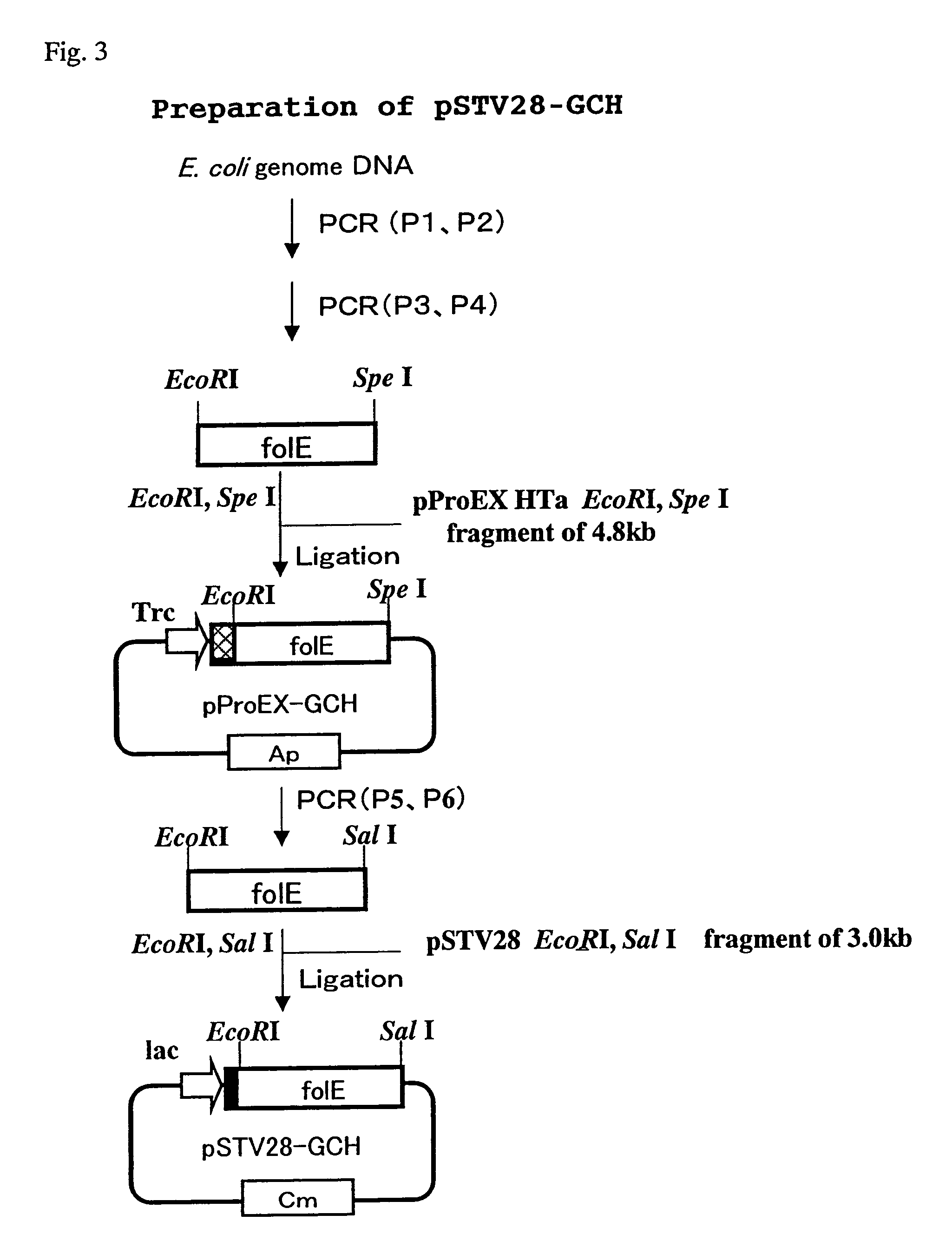Process for production of biopterin compound
a technology of biopterin and compound, which is applied in the field of process for producing biopterin compound, can solve the problems of low reaction yield, high cost of rhamnose and deoxyarabinose which are starting materials, and hardly said to be advantageous manufacturing methods in terms of operation, yield, cost,
- Summary
- Abstract
- Description
- Claims
- Application Information
AI Technical Summary
Benefits of technology
Problems solved by technology
Method used
Image
Examples
example 1
Preparation of GCH Gene, PTPS Gene and SPR Gene
[0181]1. Cloning of GCH (GTP Cyclohydrase I) Gene Derived from Escherichia coli
[0182]Genomic DNA was extracted from Escherichia coli (W3110 strain) by a reported method (Seibutsu Kogaku Jikkensho [published by Baifukan, pages 97-98]). This was used as a template and a PCR was carried out by a conventional manner using sense primer P1 (SEQ ID NO: 1) and antisense primer P2 (SEQ ID NO: 2) to prepare GCH gene (folE) [Katzenmeier, G., et al., Bio Chem Hoppe Seyler 372:991-997, 1991, [GenBank×63910]]. After that, DNA containing the resulting GCH gene was used as a template and a PCR was carried out using sense primer P3 (SEQ ID NO: 3) and antisense primer P4 (SEQ ID NO: 4) to add cleavage sites for restriction enzymes EcoRI and SpeI to the untranslated regions of 5′end and 3′end of GCH gene, respectively. This PCR product was digested by EcoRI and SpeI and introduced into the EcoRI and SpeI sites of vector of pProEX HTa (GIBCO BRL) to prepa...
example 2
Preparation of Plasmid pSTV28-GPS Producing the Biopterin Compound for Escherichia coli
[0192]pSTV28-GPS which is a THBP synthase expression plasmid for Escherichia coli was prepared by the following method. Firstly, a PCR was carried out using pUC18-PTPS mentioned in Example 1 as a template to amplify DNA containing from lac promoter to termination codon of PTPS gene. In designing the primer for the PCR, SalI site was provided to sense primer while BamHI site was provided to antisense primer so as to make the cloning thereafter easy. Those primers had sequences of sense primer P19 (SEQ ID NO: 19) and antisense primer P20 (SEQ ID NO: 20), respectively. The resulting PCR product was subjected to a precipitating treatment with ethanol, dissolved in a TE buffer (10 mM Tris-HCl (pH 8.0), 1 mM EDTA) and cleaved by restriction enzymes SalI and BamHI.
[0193]After that, a PCR was carried out using pUC19-SPR mentioned in Example 1 as a template to amplify the DNA containing from lac promoter ...
example 3
Preparation of pYES2-FPS, a Plasmid Producing the Biopterin Compound for Yeast
[0195]A PCR was carried out using sense primer P25 (SEQ ID NO: 25) and antisense primer P26 (SEQ ID NO: 26) where pUC18-PTPS was used as a template to add the cleavage sites for restriction enzymes BamHI and XhoI to the untranslated region at 5′end and 3′end, respectively, of PTPS gene. The PCR product was digested by BamHI and XhoI and inserted into BamHI and XhoI sites of pYES2 / CT vector to prepare pYES2-PTPS (FIG. 8).
[0196]After that, a PCR was carried out using sense primer P27 (SEQ ID NO: 27) and antisense primer P28 (SEQ ID NO: 28) where pUC19-SPR was used as a template to prepare cDNA containing SPR gene having the cleavage sites for restriction enzymes BamHI and XhoI at the untranslated region at 5′end and 3′end, respectively, of SPR gene. The PCR product was digested by BamHI and XhoI and inserted into the BamHI and XhoI sites of pYES2 / CT vector (Invitrogen) to prepare pYES2-SPR (FIG. 8).
[0197]The...
PUM
| Property | Measurement | Unit |
|---|---|---|
| temperature | aaaaa | aaaaa |
| temperature | aaaaa | aaaaa |
| temperature | aaaaa | aaaaa |
Abstract
Description
Claims
Application Information
 Login to View More
Login to View More - R&D
- Intellectual Property
- Life Sciences
- Materials
- Tech Scout
- Unparalleled Data Quality
- Higher Quality Content
- 60% Fewer Hallucinations
Browse by: Latest US Patents, China's latest patents, Technical Efficacy Thesaurus, Application Domain, Technology Topic, Popular Technical Reports.
© 2025 PatSnap. All rights reserved.Legal|Privacy policy|Modern Slavery Act Transparency Statement|Sitemap|About US| Contact US: help@patsnap.com



